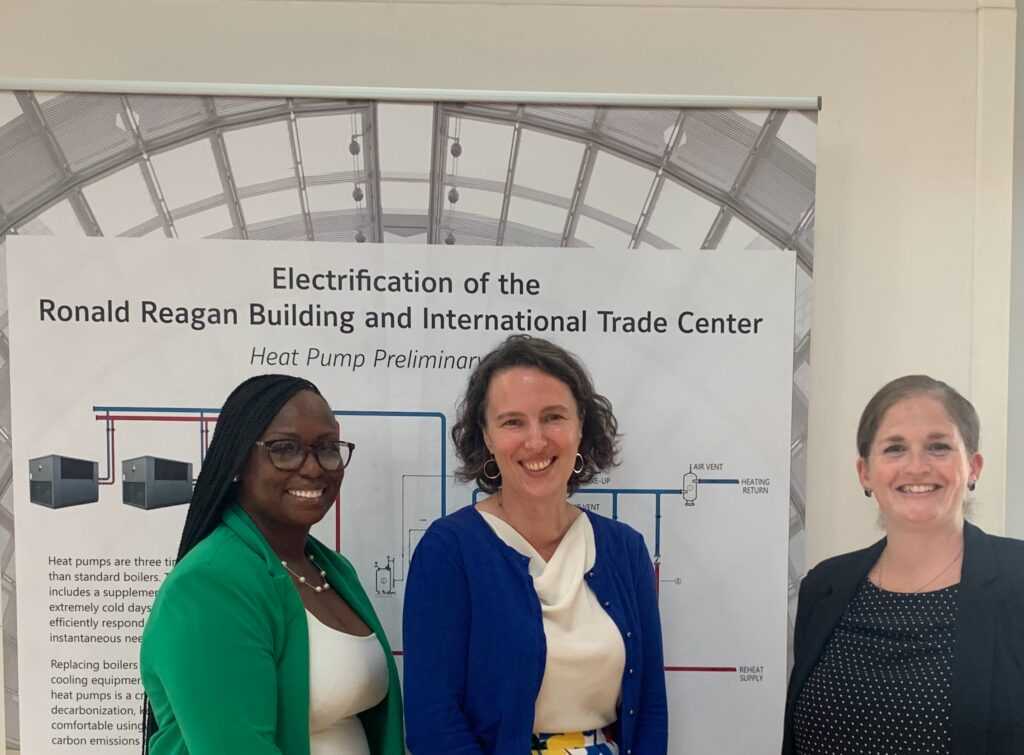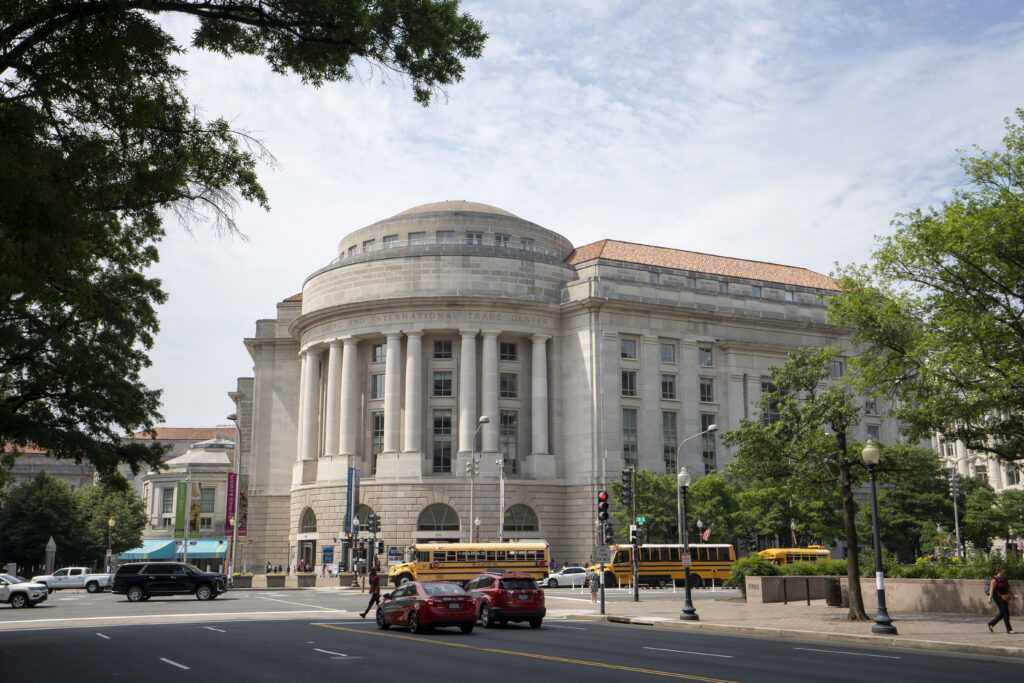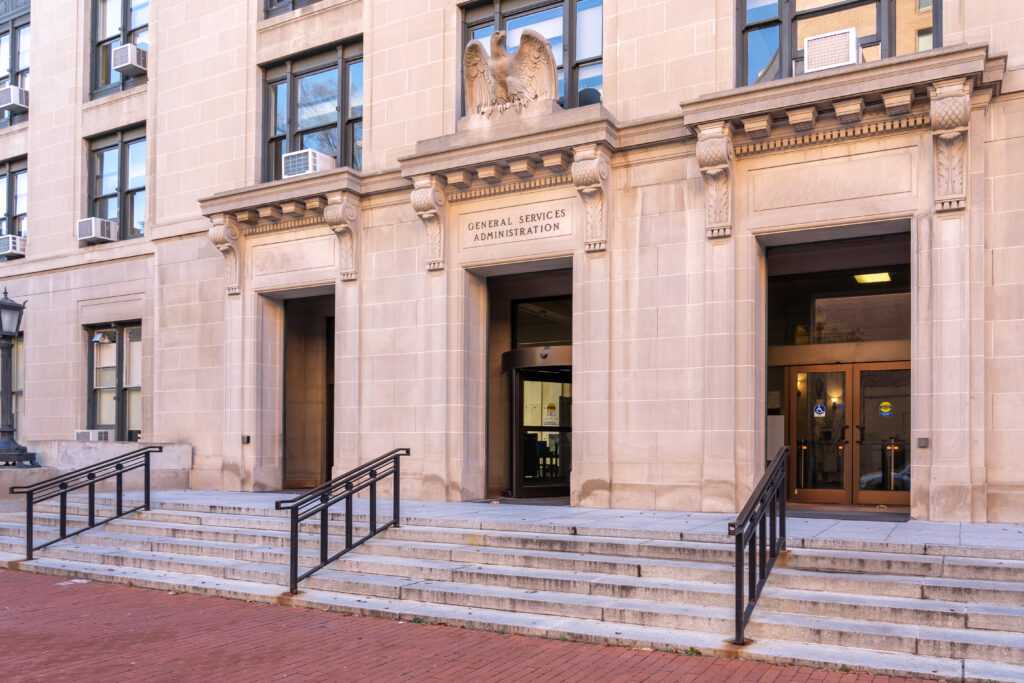The U.S. General Services Administration (GSA) just announced a massive investment in electrifying federal buildings. This may not make headlines because, for many people, the federal government’s plans to invest in upgrades to its own buildings may not seem that exciting. But these are in fact, our public buildings and the GSA is America’s biggest landlord. Investment like this has the potential to catalyze market action and it sets an example for other buildings and states and cities across the country.
Details of the initiative
Last year, the White House unveiled a Federal Building Performance Standard (BPS) and on June 20, GSA shared it was committing its first major funding to meeting this standard. During an event at the Ronald Reagan International Trade Center in Washington, D.C, the GSA shared plans to electrify and eliminate carbon emissions from that building and many others. The nearly $1.9 billion investment comes from Inflation Reduction Act (IRA—or, as we affectionately call it, Uncle Ira) funding paired with additional private loan capital and partnerships with energy service companies. Meeting the federal buildings BPS across this stock will require substantial investment—exactly the kind of large-scale change that Uncle Ira specializes in!

The Federal BPS requires complete elimination of onsite greenhouse gas (GHG) emissions—otherwise known as “Scope 1 emissions”—of 30% of the federal floor area by 2030. The Biden Administration’s Federal Sustainability plan further aims to get all federal buildings to net-zero emissions by 2045. This focus on Scope 1 emissions in the Federal BPS and the GSA’s new investments is a key limitation—nothing in the Federal BPS or the new IRA investment addresses “Scope 2” emissions from electricity or district energy systems. That said, there are other plans and policies to decarbonize electricity, which we will explore shortly.
Funds in action

To look at how this plays out on the ground, let’s return to the Ronald Reagan International Trade Center in D.C. At 3.1 million square feet, it is one of the largest buildings in the GSA portfolio, and the largest single building in Washington, D.C. The GSA plans to deploy up to $13.5 million in IRA funds to electrify the building’s primary heating systems through heat pumps, eliminating all on-site combustion, as well as investing in LED light bulbs, new energy transformers, and an innovative reverse osmosis groundwater recovery system that will save more than 35 million gallons of water annually.
As I mentioned, the GSA plans do not directly address Scope 2 emissions such as electricity and district energy—and we see this playing out in this case as well. From what we know, the Reagan building will not be fully electrified, as it may continue to receive supplemental gas-fired steam from the GSA’s Central Heating Plant. However, using on-site electric heat pumps to reduce the use of district steam from a primary to a backup heating source is a well-established interim strategy in decarbonization, and one that can still yield substantial energy and carbon savings. Additionally, between EPA draft rules limiting GHG emissions from electricity nationwide issued last month, and some direct procurement of on-site and off-site renewable electricity by the GSA, electricity emissions are not being forgotten. So, what real-world effects does this have?
The national and local impact
The federal buildings BPS sets an ambitious short-term goal—and all the more so when you consider the size of the GSA portfolio. With over 360 million square feet under management across the U.S., the General Services Administration has more square footage under management than any other landlord in the U.S. As a point of comparison, that represents approximately 0.4% of all 97 million square feet of commercial floor area in the U.S., and it exceeds the total floor area of all private commercial buildings in Washington, D.C. and other similarly sized cities. The investments announced this month will impact 20% of the GSA floor area, and affect over 125 buildings across the country—potentially reaching about two-thirds of the floor area that needs to be targeted under the federal buildings BPS.

There is also a key interaction between these federal actions and local and state BPS laws. Unlike the federal buildings BPS, local and state government BPS programs apply progressively more stringent energy and/or GHG reduction requirements to all large private buildings—not just a single portfolio. There are five BPS programs in effect in the U.S. already, and over 40 jurisdictions have joined the National Building Performance Standards Coalition—with the most recent addition coming today from the State of Maryland.
However, local and state governments don’t have the power to regulate federally-owned buildings. This can throw a wrench in local decarbonization efforts because jurisdictional climate goals include all emissions, even those they don’t have power over. To achieve their carbon neutrality goals, local and state governments not only need financial and technical support, but also commitments from federal institutions to improve their buildings across the country.
Marrying jurisdictional and federal climate goals
This is particularly the case in Washington, D.C, which was the first city in the U.S. to adopt a Building Performance Standard. In the nation’s capital, much of the building stock is federally owned. Currently the District’s BEPS only covers half the city’s buildings footprint. IMT analysis shows that including federal buildings increases the amount of floor area and emissions footprint impacted by as much as 30%! How do we bridge this gap and empower stakeholders at all levels to work towards collective climate goals?
IMT has one solution: high-performance building hubs. We have collaborated with several jurisdictions to improve the education and engagement of stakeholders with BPS policies and programs. In 2021, IMT introduced the Building Innovation Hub (the Hub), an organization supported in part by the DC Department of Energy & Environment to help building professionals in the Washington D.C. area create and operate high-performance buildings.
The Hub plays a vital role in connecting those working and advocating in the built environment, including real-estate developers, designers, community-based organizations, contractors, and local government entities. They make it easier for buildings to act in a way that not only reduces emissions, but improves owners’ bottom line and the experience of their occupants. With a platform built on educating the District’s stakeholders about BPS, it also allows space for the Hub to implement additional resources such as workforce development, connections to financing, and project procurement support. For example, the Hub’s Building-to-Vendor Matchmaking connects local vendors with the influx of retrofit and electrification projects, delivering on high-impact economic benefits. The Hub’s Success with BEPS program provides one-on-one support for building decision makers to help them understand their building’s energy performance, key BPS milestones, and next steps towards compliance. Other state and local jurisdictions can, and should, capitalize on these investments that benefit our transition to a clean energy economy.
A new paradigm
This announcement is but the latest example of an ongoing market transformation to healthy, all-electric buildings that offer benefits to people, the environment, and the economy. It also, it must be said, represents a growing recognition that sometimes climate investments must go beyond what is justified in short-term financial paybacks. The GSA projects that the projects funded by this $975 million investment will deliver $467 million in energy costs savings over the next 20 years. Paying back a decent portion of the costs with energy savings over time is great! But it must be acknowledged that a ~50% payback over 20 years is a far cry from expected market returns. But long-term institutional and government owners naturally have a different calculus, and these investments meet the key public good of preserving a livable climate.
Moreover, we will not achieve our climate goals and re-build an equitable economy with an exclusive focus on positive short-term paybacks. Policymakers are increasingly recognizing this, and looking to both mandates like BPS and ambitious government financial assistance programs to close the gap, so the private sector can undertake transformative work while still making money.
The GSA investments show that the IRA is working in achieving its goals of accelerating the decarbonization of the U.S. economy—and they set an example for broader action. By leveraging funding from programs like the IRA, private buildings should be able to follow the GSAs lead and achieve deep savings with less of their own money, and help build a better, cleaner future for all.

